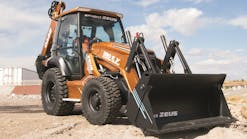A few days ago SpaceX successfully landed its Falcon 9 rocket onto the autonomous spaceport drone ship “Of Course I Still Love You.” It was a very exciting milestone for SpaceX, considering its plans for the future. As exciting as it was to watch, this was not the ultimate feat or grand finale for Elon Musk’s company. You can expect SpaceX to reach numerous milestones before it achieves its goal of affordable space travel. This was just one small step. The following video explains the need to land the Falcon 9 at sea and why it’s just another piece of the puzzle.
SpaceX is building a space travel infrastructure one calculated step after another. The most difficult tasks are being accomplished.
The will to rebuild our nation’s infrastructure is growing. We need to figure out which steps to take and then simply do the work to get it done.
Infrastructure Week is from May 16–23, 2016. It is a national week of events, media coverage, and education and advocacy efforts to elevate infrastructure as a critical issue impacting all Americans. It is comprised of more than 100 affiliate organizations from all sectors of the nation’s economy and civil society. Forester Media, the publisher of Grading & Excavation Contractor magazine is an Infrastructure Week affiliate. And this magazine blog has already been having the conversation.
A few weeks ago, I reached out to various manufacturing executives and industry experts with four questions regarding the state of our infrastructure. We’ve had responses from the Association of Equipment Manufacturers, Volvo, and John Deere.
This week we hear from Jim Hasler, the vice president of CASE Construction Equipment, North America.
Grading & Excavation Contractor (GX): Which infrastructure projects should be given priority? Roads and bridges? Dams and levees? Water supply? Electrical grid?
Jim Hasler (JH): All major categories of American infrastructure require attention. If you use the ASCE report card as a guidepost, the highest-rated infrastructure category in our country is the handling of solid waste with a B-. There are more Ds than all other grades combined.
The highway bill passed in late 2015 was a great first step—but we need to caution against a sense of complacency that comes with it. The new long-term bill will help improve maintenance of existing systems and spur some new construction, but many counties and states still face funding shortfalls. Highway replacement schedules and new construction are pushed out and delayed as we make due with current funding levels. Each state must come up with new solutions for funding, and the federal government still needs to establish a sustainable long-term solution for infrastructure funding.
The Flint, Michigan, water crisis has brought renewed attention to the issue of clean and dependable water supplies. Much of the infrastructure that brings fresh water into our homes is antiquated and is either near or past its useful life. And while recent rains and storms have helped in the western United States, there are still drought conditions in many parts of the country and a possible shortage of access to fresh water.
Those are two of the more high-profile infrastructure issues facing us today, but others persist. FAA Reauthorization will have a significant effect on how airport infrastructure is modernized. Ports need supporting infrastructure for larger ships and increasing volumes. And while oil prices are currently very low, the means in which we distribute oil and gas throughout North America will continue to be important.
GX: Is there a solution to long-term infrastructure funding?
JH: That’s up to both the federal government and each individual state government. While there remains a general aversion to anything that resembles a revenue increase, some of the more successful state-level infrastructure initiatives have revolved around clearly identifying projects and needs within the state and showing how newly-raised funds will improve it.
If accountability can be shown, the general public tends to understand that it takes money to maintain and build our infrastructure, and that funding levels have not kept pace with the rate of inflation and the increased costs of materials and supplies. There are a number of states, for instance, that passed gas tax increases before the recent drop in fuel prices. Now those states have added transportation funding and the general public is enjoying lower prices at the pump.
Having said that, where the money comes from in each state or region will vary. Some states have passed fuel tax increases. Others have tied it into sales taxes. Tolling is popular in some areas—and new methods, such as vehicle miles traveled (VMT), are being examined in many areas.
GX: What kind of harm is the current state of our infrastructure doing to the economy and the community?
JH: The state of our infrastructure impacts every aspect of American commerce. Throughout our Dire States activities, we’ve seen some very powerful examples of this: soybean farmers in Illinois having to travel miles out of their route to get their products to market, which raises the price per bushel; logging companies in northern Wisconsin forced to travel routes that are indirect and cut through residential areas and school zones because those are the only roads that can handle the trucks; ports in the Pacific Northwest that were losing relatively local business to ports in other states because the highways feeding the local port were inadequate; and businesses in Wisconsin considering relocating their operations due to access to highways.
That last part is important: numerous studies show that companies choose where to locate their manufacturing facilities based on access to highways and skilled labor. For communities that want to grow their economy, a robust infrastructure is table stakes.
It also affects the community. Countless studies have shown that road and highway safety, automotive repair costs, commuting times, and fuel efficiency are all impacted by road conditions.
GX: What can various government entities—from local to federal—do to attract private sector support and investment?
JH: The argument for infrastructure investment boils down to a smart business decision. Investing now will help avoid higher construction costs in the future and will significantly reduce the wasted time, energy, and money it takes to navigate an inadequate system. It doesn’t take much analysis to see all of the money that can be saved by investing now. The private sector understands that concept very well – and ultimately stands to benefit from it. Appealing to their business sense will help get them engaged.
GX: Thank you, Jim.
Next week we’ll have an executive from the construction technology company, Trimble, answering our four questions on the state of our infrastructure.
These issues go well beyond grading and excavation. All of Forester’s publications, Stormwater, Erosion Control, Business Energy, Water Efficiency, and MSW Management have asked the same four questions of their various industry executives and experts. All of the discussions will be revealed here on the Forester Network leading up to Infrastructure Week 2016.
Feel free to join the discussion by adding your comment below.









